2798Views 9Comments
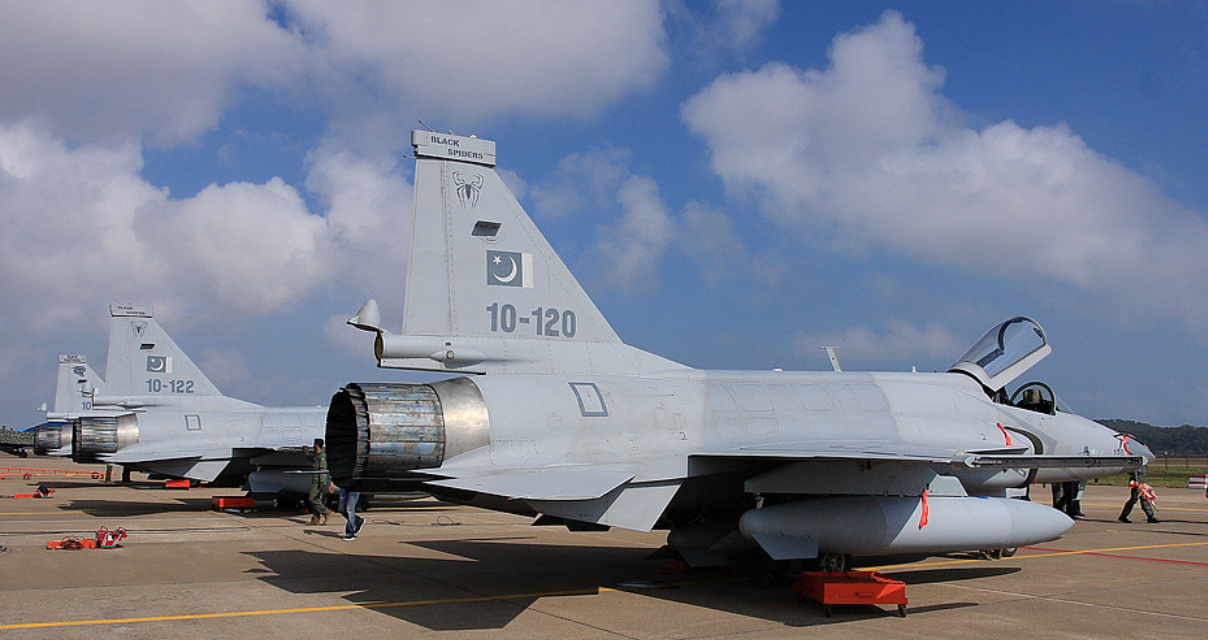
The JF-17 IV: Tomorrow’s Weapon Systems
By Bilal Khan
The previous part of Quwa’s JF-17 series outlined the major changes coming to the platform via the development of JF-17 Block-3. Whereas the JF-17 of today is a significant improvement for the Pakistan Air Force (PAF) in terms of being an effective backbone fighter, the JF-17 of the near future (i.e. Block-3) is poised to possess characteristics of (at least on its own terms) a genuine force-multiplier and high-tech asset. This point should not be construed for suggesting that the JF-17 would somehow become better than the Su-30MKI or Rafale, absolutely not, but rather, with an Active Electronically Scanned Array (AESA) radar, Helmet Mounted Display and Sight (HMD/S), and the next wave of advanced air-to-air and air-to-surface weapons, the JF-17 would be a credible means of defence for Pakistan.
This piece will discuss one of the most critical gains of the JF-17 program, the ability for the PAF to freely integrate advanced weapon systems of its choice to the platform, thus enabling it to assume the same mission capabilities of the PAF’s marquee fighters, the F-16 Block-52+, the F-16 Mid Life Update (MLU), and the Mirage ROSE-I/II/III. Not only that, but in some cases (that are unique to the PAF due to political or economic reasons), to enable the JF-17 to take on roles that even PAF F-16s likely would not (such as long-range stand-off strike).
Based on the arms-transfer database compiled by the Stockholm International Peace Research Institute (SIPRI), the PAF JF-17’s entire weapons inventory at induction was composed of purely Chinese air-to-air and air-to-surface munitions. Each of these munitions were discussed in a previous piece on Quwa, but the short of it is that they imbued the JF-17 and the PAF with beyond-visual-range (BVR) air-to-air and precision-strike capabilities. However, access to Chinese technology has not stopped the PAF from integrating additional weapon-systems onto the JF-17, nor will it preclude the JF-17 from being supported by the Pakistani defence industry.

Air-to-Surface Munitions
The first high-profile addition to the JF-17’s inventory would be the Mectron MAR-1 anti-radiation missile.[1] Developed and produced in Brazil by Mectron and the Aerospace Technology and Science Department, the MAR-1 was designed to target and engage signal emitting targets (note the discussion on radar technology in the prior piece). In other words, radars. A missile of this nature is used in Suppression of Enemy Air Defence (SEAD) operations, and the MAR-1 specifically was designed to work as using its own passive anti-radiation seeker as well as pre-programmed coordinates. In fact, the MAR-1 is also capable of targeting based on information from radar warning receivers (RWR) (which are discussed in further detail in this piece), i.e. the signals registered by the JF-17 or other aircraft, such as the Erieye and ZDK03 Airborne Early Warning & Control (AEW&C) aircraft in PAF service.
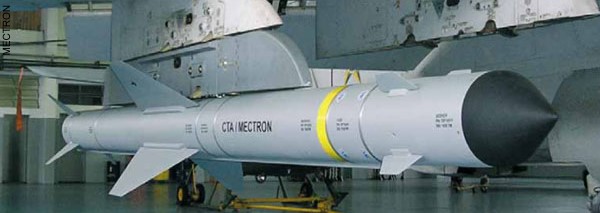
Overall, the MAR-1 stands as a critical piece in the PAF’s capacity to take on enemy air defence networks (involving radars and the surface-to-air missile systems that rely on said radars). It should be noted that as of the writing of this article, the PAF’s F-16s are not equipped with modern anti-radiation missiles necessary for SEAD missions. The MAR-1’s integration has been confirmed on the PAF’s Mirage ROSE fighters, with integration on the JF-17 slotted for the near future.
In terms of air-to-surface weapons, one of the PAF’s indigenously sourced assets is the H-series of precision-guided glide bombs developed by Air Weapons Complex (AWC) and produced by the National Engineering and Scientific Commission (NESCOM). Word of the H-2 and H-4 initially came about in 2003, but it was in 2004 when it was more clearly understood exactly what AWC had developed. The H-2 and H-4 were based on the South African company Denel’s Raptor-I and II. Like the Raptor-I, the H-2 is a TV-guided glide-bomb design with a range of 60km. The H-4 – like the Raptor-II – is a rocket-boosted version of the H-2/Raptor-I, and as a result, possesses a range of 120km. At present the H-2 and H-4 are used by the PAF’s Mirage ROSE fighters, but they will eventually see integration on the JF-17. The JF-17 may also use the H-2 and H-4 in conjunction with a targeting pod such as the Chinese WMD-7, a modular solution that can enable any JF-17 in the PAF to use the H-2/H-4 with the support of optical and infrared guidance (in case of heavy electronic warfare jamming), which would be an alternative to having a specially modified airframes available to fewer units.
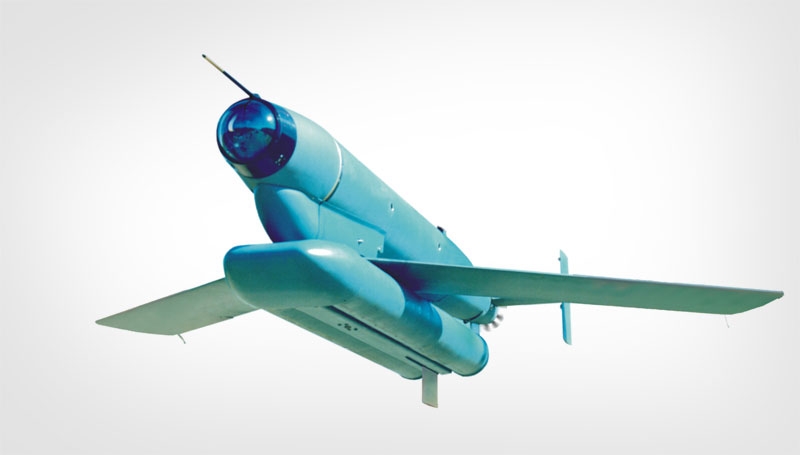
Stand-off air-to-surface weapons such as the H-2 and H-4 are important advances for the PAF as it allows the PAF to potentially engage targets in India from within Pakistan (and away from particularly dangerous environments in general). This is a key capability to have if one intends to engage in pre-emptive strikes. In addition, the PAF bought large numbers of LS-3 and LS-6 precision-guided bombs (PGB) kits. The LS-3 and LS-6 are similar to the American Joint Direct Attack Munition (JDAM) in that they are essentially kits meant for unguided general purpose bombs (GPB), transforming the latter into PGBs. The Pakistani firm Global Industrial Defence Solutions (GIDS) developed a similar solution in the form of the GIDS Takbir. Specific details are unclear, but if developed along the lines of the JDAM and LS-3/6, then the Takbir is essentially a smart-kit for GPBs, most likely Mk-82 GPBs, which are common and also produced by AWC.
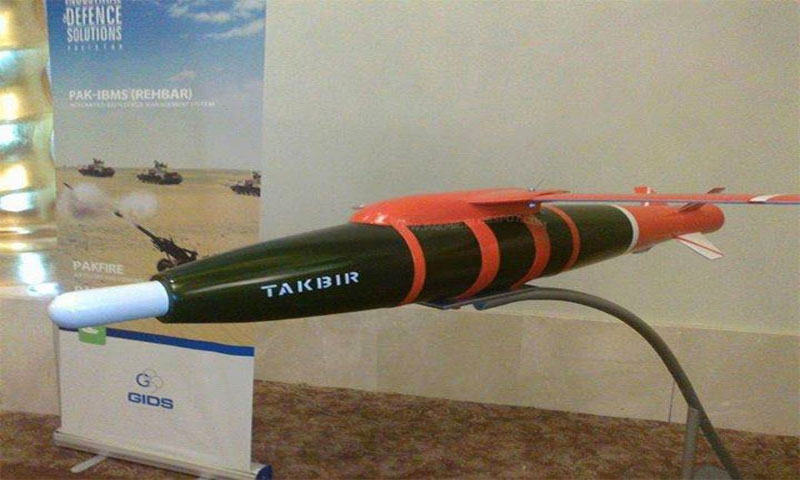
Given the large numbers of LS-3 and LS-6 slotted for PAF service, it is likely that the GIDS solution will be maintained as a measure of redundancy to ensure that critical offensive capabilities are produced in-house and not just imported. GIDS will probably end up replenishing the PAF’s PGB stocks over the years as well. The GIDS Takbir program will hopefully see further development in the future, especially in terms of enabling heavier Mk-83 (500kg) and Mk-84 (900kg) GPBs for precision-strike.
The upper-spectrum of the PAF’s stand-off strike capabilities sit with the Ra’ad air launched cruise missile (ALCM) developed and produced by Air Weapons Complex (AWC). Ra’ad has a range of 350km and while it is a key element of Pakistan’s nuclear deterrence spectrum, it is also a major conventional asset. The Ra’ad itself is similar to other ALCMs, such as the French MBDA SCALP/Storm Shadow and Turkish SOM. The Ra’ad’s airframe was designed around low-radar-cross-section (RCS) principles, so as to reduce its observability on radar, and the ALCM itself is powered by a turbojet engine.

Some analysts, such as those of Jane’s, had noted that the Ra’ad bears some aesthetic similarities with Denel’s MUPSOW and Torgos designs. This aspect will be discussed in a future article, but the similarities are not coincidental as Pakistan did draw from South African technology since the late 1990s, and it may do so again (if it is not already) in the near future as well. In any case, Ra’ad is an important platform, not just for its ability to house nuclear warheads, but also in conventional terms. It was reported in February 2008 that Turkey and Pakistan had agreed to jointly develop precision-guided sub-munition technology.[2] If these efforts come to fruition, it would not be a significant stretch to suggest that a sub-munitions dispenser could be developed for the Ra’ad (and possibly even other systems), thus allowing the missile to serve a role in engaging scattered targets, such as tanks and armoured vehicles. Additional improvements to Ra’ad, such as in range and the airframe (for further reduction in RCS and weight), should not be ruled out either.
Air-to-Air Missiles
The integration of a HMD/S system onto the JF-17 (starting with Block-3) will enable the fighter to effectively use 4th and 5th generation high-off-bore-sight (HOBS) within-visual-range air-to-air missiles (WVRAAM). The Denel A-Darter (a joint-program between South Africa and Brazil) was recently cited as a possible option for the JF-17.[3] With its thrust-vectoring nozzles (which can direct the rocket’s exhaust to various directions) and infrared-seeker, the A-Darter was designed to be a highly maneuverable heat-seeking WVRAAM. With an HMD/S, the pilot can lock-on to a target by simply directing his or her head towards to the target. Upon firing, the thrust-vectoring nozzles of the A-Darter will enable it to quickly engage in high-g maneuvers against the receiving target. If successfully acquired, the A-Darter could enable the PAF to at least partly offset the JF-17’s inherent aerodynamic limitations (e.g. lower thrust-to-weight ratio or TWR) in a dogfight.
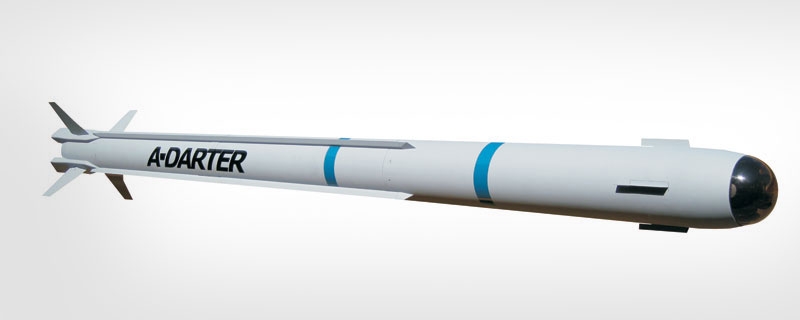
With the induction of the SD-10 beyond-visual-range air-to-air missile (BVRAAM) complete, there has been some hope to see the JF-17 eventually equipped with a long-range BVRAAM (i.e. in excess of 100km). The procurement and efficient use of such a system would depend on the range of the JF-17’s future radar. It is important to remember that the JF-17 was not meant to be expensive to the point of being unfeasible. Subsystems such as an AESA radar could easily tip the JF-17 into that direction, so one should expect limitations to what the JF-17 will be made capable of just as much as one should be hopeful for substantive improvements. If such improvements are forthcoming, then the PAF could potentially source a long-range BVRAAM from China or South Africa.
Note, this is not an exhaustive list of the munitions the JF-17 will use in the coming years. In fact, if AWC and NESCOMs’ work are of any indication, the Pakistani defence industry is capable of developing additional solutions, especially if it connects with potential partners in China, Turkey, South Africa and Brazil. The topic of Pakistani munitions development deserves its own piece, but there is enormous potential for the likes of NESCOM, AWC, GIDS and others to serve a pivotal role in expanding the JF-17’s air-to-air and air-to-surface capabilities.
References:
[1] Robert Hewson. “Integration confirmed for Brazil’s MAR-1 missile.” Jane’s Defence Weekly. 05 May 2011.
[2] Lale Sariibrahimoglu. “Pakistan agrees to further defence co-operation with Turkey.” Jane’s Defence Weekly. February 2008
[3] Alan Warnes. “JF-17 Thunder: Pakistan’s multi-role fighter.” Note: a special publication released by the Pakistan Air Force during the Paris Air Show of 2015.

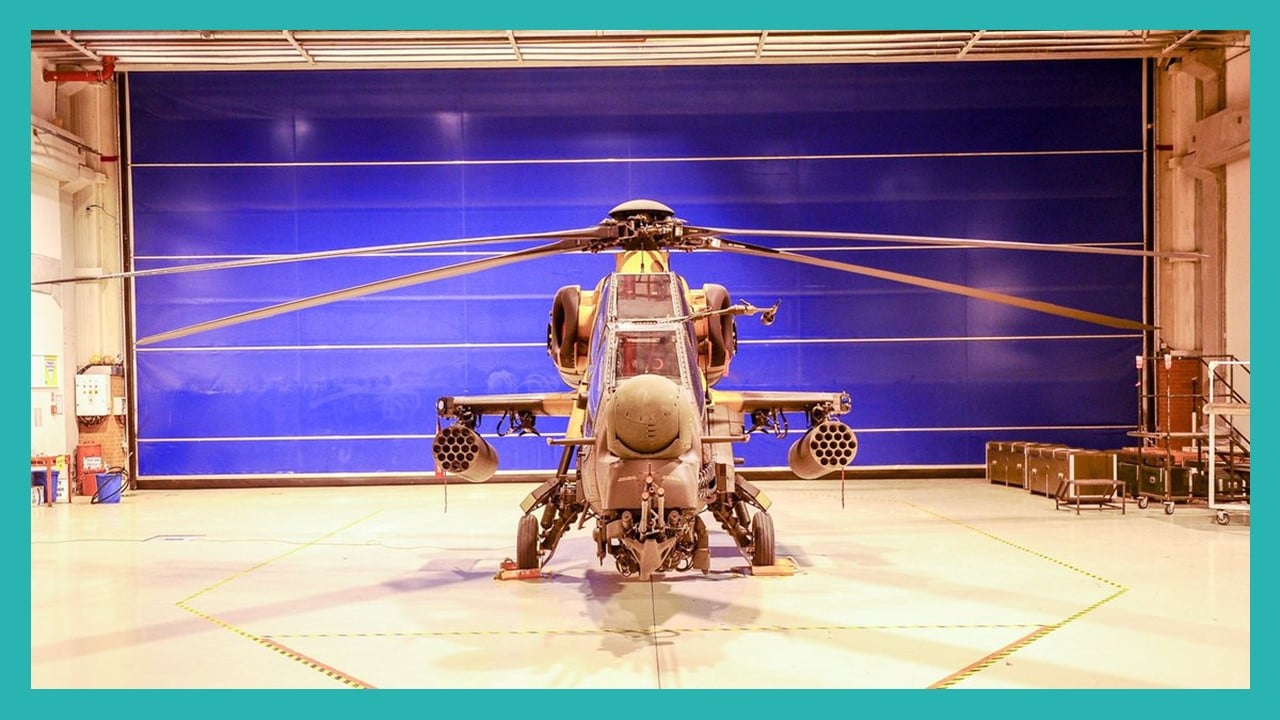

9 Comments
by jigsaww
Great article. I was under the impression that Ra’ad and MAR-1 have been integrated on JF-17 starting Block 2. But its good to get some clarifications on that. Either way, it is set to be integrated in a couple of years time. I really like that you do no present JF-17 as the ultimate machine in the sky (like we get this from Tejas lovers everyday) but that you present a more realistic and true picture in the backdrop of the circumstances that pushed for JF-17.
I have few requests…if possible for you to cater.
1. Recently there have been reports of pakistan acquiring or russia offering the SU-35. Can you do any piece on this if how much authenticity is there in such reports and if Pakistan requires such a platform. On the outside, it does look like pakistan would need but to what extent PAF is in need of this.
2. Could you also include India in the country watch area for analysis on indian acquisitions and where pakistan needs to improve to counter them, for example rafale’s acquisition etc.
3. Please do some more articles on Pakistan navy and its capabilities. PAF and PA usually get more limelight and we tend to ignore PN. Please do some pieces on what PN is acquiring and how good are these acquisitions and what improvements it needs.
thank you. your work is very good.
by saqrkh
Thank you for the kind words sir, I truly appreciate it. Each of your requests is on the horizon. Since i just started, I have been looking to produce content based on a consistent and regular schedule, I’ll get there soon. That said, I’ll deliver a piece on the Su-35 news in the next couple of days.
by Rehan
Good Article, I want to ask if there is history of SD-10 BVR missile in any conflict and how it is compared to its rivals such as AIM120
by saqrkh
To be honest it is tough to compare when details on the SD-10 are scarce. In very broad terms some analysts have put it in the same general category as the AIM-120, but there is no publicly available information to suggest where it sits in specific terms in comparison to the AIM-120, R-77, MICA, etc. And to the best of my knowledge, the SD-10 hasn’t seen combat.
by Abdul Rashid
What likely issues are there to integrate Ra’ad on the JF-17. JF-17 is designed for ease of maintenance with the panels at easy access height. As a result (according to some speculation on the Internet) there is insufficient clearance under the aircraft to take off with a Ra’ad cruise missile fitted to the centre hard-point. Just by looking at the photos on the internet PAF’s Mirage aircraft (the ones currently used to test Ra’ad) do indeed appear to have much greater clearance underneath. Do you have any information regarding this and more importantly, if this is really the case, how can the problem be overcome at minimal cost and/or modification? Your input would be appreciated. Thanks.
by jigsaww
Hi, I’ve heard those rumors too. Frankly, i do not know exactly how and
if ra’ad has been completely integrated on JF-17 or not. Yes Mirage does
have a higher ground clearance and Ra’ad is a functional system on
Mirages but as far as JF-17 goes, there is not much information
available on Ra’ad integration. IHS janes noted a few days back that
sina . com gave report of ra’ad being fired from jf-17 but there is no
confirmation from PAF although Ra’ad has been slated for JF-17
integration for a while now. My understanding is that Ra’ad has a
diameter of around 2.8 feet whereas JF-17 provides a clearance of at
least 3.5 feet from the ground.
If this is indeed a problem, i don’t
think there would be an easy solution to it except perhaps longer
landing gears which would require making more space inside the already
small jet. Although this is only a problem with having ra’ad under the
fuselage. However, if PAF plans to do a mission profile with 2 Ra’ads on
wings then its a different story. I guess we just have to wait for now.
My understanding is that block 2 will see ra’ad integration but since
its a nuclear weapon capable missile, it just might never come into
limelight as say CM400 AKG or C-802. JF-17 however will see ra’ad
integrated. I’ll try to dig up more on this and let you know if i hear
something.
by Abdul Rashid
Thanks.
With the landing gears perhaps there can be an innovative solution using hydraulic actuators that can extend/unfold and lock to provide the additional clearance yet require minimal extra storage room when retracted. But then I do not have relevant specific experience in the field to know if this would be feasible. Even a lightweight fighter aircraft is a heavy beast and the landing gears would need to be able to sustain the load adequately. In any case, this would also negate some of the easy access advantage the technicians currently enjoy due to the low profile design.
I had assumed Ra’ad would be under the fuselage purely on the basis of this being the case with PAF’s Mirage tests. Interestingly, the only diagrams (though not actual photos) of the JF-17 with the Ra’ad show 2 missiles under the wings. At a weight of 1,100 Kg a piece they are slightly heavier than CM-400AKG’s 910Kg but I guess it is easily doable.
If the JF-17 makes an appearance at 2016 Farnborough International Airshow I will try and take the time to visit both days and talk to the team. Not that I as a civilian spectator can realistically hope to glean any information not already released but hey, it’s worth a try. Nothing ventured, nothing gained. If I learn anything interesting I will sure keep you updated!
by saqrkh
I actually wonder if ground-clearance is the issue.
Looking at the Ra’ad relative to the height of a person, it doesn’t seem like it’s bigger than the standard fuel pod (though the intakes could be a little too low).
http://www.paffalcons.com/gallery/weapons-defence/images/weapons-defence-1-large.jpg
To be honest, the PAF’s generally coy about the integration of specific weapon systems on the JF-17. Besides the explicit mention of SD-10, PL-5, C-802, GPB and LGB from that promotional video, you won’t find it mention anything about the LS-3/6, LT-series, H-2/H-4, MAR-1, etc, in the open.
This is not to say Ra’ad or the other weapon systems haven’t been integrated, the PAF just prefers to keep these things close to its chest.
by Abdul Rashid
Is the air intake not initially retracted and lowered only once the missile is actually launched? On public displays photos I can find on the internet the intake is showing but I wonder if this is only for display purposes. I know with the Babur missile the air intake is deployed post-launch (Utube animation video 20/07/2007). The issue as speculated on the Internet is not so much with the clearance in terms of mounting the missile but rather during take off the aft end of it would not have sufficient ground clearance. When comparing to a fuel pod therefore, the length, relative mounting position along the length and overall profile of the two units needs to be considered too. Ra’ad is 4.85m length (Wikipedia (Sorry, not the best source I know!)). I do not know the length of the Jf-17’s fuel pod. Also, the Ra’ad appears to have less off a taper on the aft end than the fuel pod. But in any case, if the missile can easily be mounted under wing then there is hardly an issue. On the Mirage tests, the missiles are always tested one at a time so the centre hard-point suffices but in combat, as Jigsaww points out, typical mission profile might involve mounting 2 ra’ads at a time.
PAF’s reluctance to release certain information is understandable. They would have carefully considered valid reasons for doing so but there is a downside to this. Too much ambiguity invites much speculation and rumours, which in turn down the years results in lot’s of contradictory “information” as is the case with many aspects of the JF-17. Glad to see Quwa playing it’s role to provide actual data and a genuine assessment of the progress and status of the project. Keep it up!